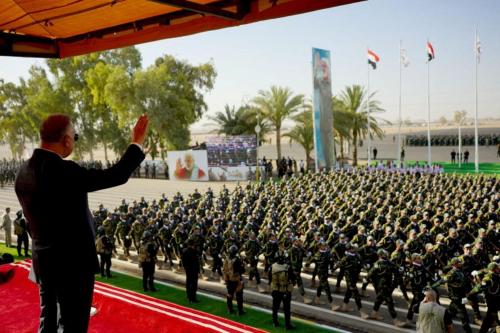As many of the world’s foreign ministers convene this week in Washington D.C. for the White House Summit to Counter Violent Extremism, displacement should be on their agenda.
Concerns are being expressed that internally displaced person (IDP) and refugee camps may become fertile recruitment grounds for violent extremism. There is certainly evidence in countries such as Pakistan, Somalia, and Yemen, of radicalization leading to violence within refugee camps. If the current Syrian crisis remains unresolved, there is the risk of a similar process unfolding here too. Indeed, there are signs that it may already be occurring in Jordan’s Zaatari camp.
Equally, violent extremism is clearly becoming a more important factor in driving people from their homes. In Iraq, the pre-2003 Christian population of 1.5 million is estimated to have dwindled to 400,000, while over half a million of Syria’s 1.8 million Christians have been displaced. In the last year, ISIS has deliberately displaced religious minorities in both countries, including Christian, Yazidi, Shabak, and Turkmen Shiite populations. Elsewhere it has been estimated that 1.5 million people have been displaced both internally and across international borders by the Islamist insurgency in north-east Nigeria.
But it would be a missed opportunity if displacement is only viewed as a potential cause for, and consequence of, violent extremism. For in at least three ways, linking displacement with violent extremism may also augur solutions.
First, there are lessons to learn from decades of efforts to empower displaced populations to find solutions to their own plight. There is new attention to how to engage people at risk of radicalization, particularly women and youth (for example the Global Community Engagement and Resilience Fund) which can learn from these efforts. For example, initiatives to empower refugee women have by no means always been successful, but they have been pioneering and offer insights in how the engagement of women’s groups can build stronger communities to counter violent extremism. Efforts to set up consultative mechanisms with IDPs and refugees offer alternative mechanisms for channeling grievances.
Finding solutions for displaced populations should be an urgent priority for humanitarian reasons but also as a security issue.
Second, making the link between displacement and violent extremism may reinforce efforts to find solutions for refugees. The risk of radicalization is especially heightened where IDPs and refugees find themselves in protracted situations: marginalized, disenfranchised, and excluded. Finding solutions for displaced populations should be an urgent priority for humanitarian reasons but also as a security issue. The engagement of development actors is particularly needed to ensure that IDPs and refugees find solutions—whether return, local integration, or settlement elsewhere—that are sustainable. As a way to counter violent extremism collaboration between development and humanitarian organizations should now become an urgent priority.
Third, a focus on displacement may be one way to leverage the right stakeholders in the global effort to counter violent extremism. Governments in many developing countries (and especially those with an Islamic majority), civil society, and the private sector, have all been wary of engaging in what is often perceived as a Western-driven and security-oriented agenda. The link to displacement can illustrate that countering violent extremism is as much about human rights, development, and empowerment, as it is about military, intelligence, and security interventions.
There is a real risk that focusing on displacement only as a cause or consequence of violent extremism will simply exacerbate the threat. It may become an excuse to restrict the entry of asylum-seekers, limit the rights of displaced persons, or force people home. A focus on solutions, in contrast, can show how a rights-based approach to displaced persons can be an integral component of the global effort to counter violent extremism.



Commentary
IDPs, refugees, and violent extremism: From victims to vectors of change
February 20, 2015